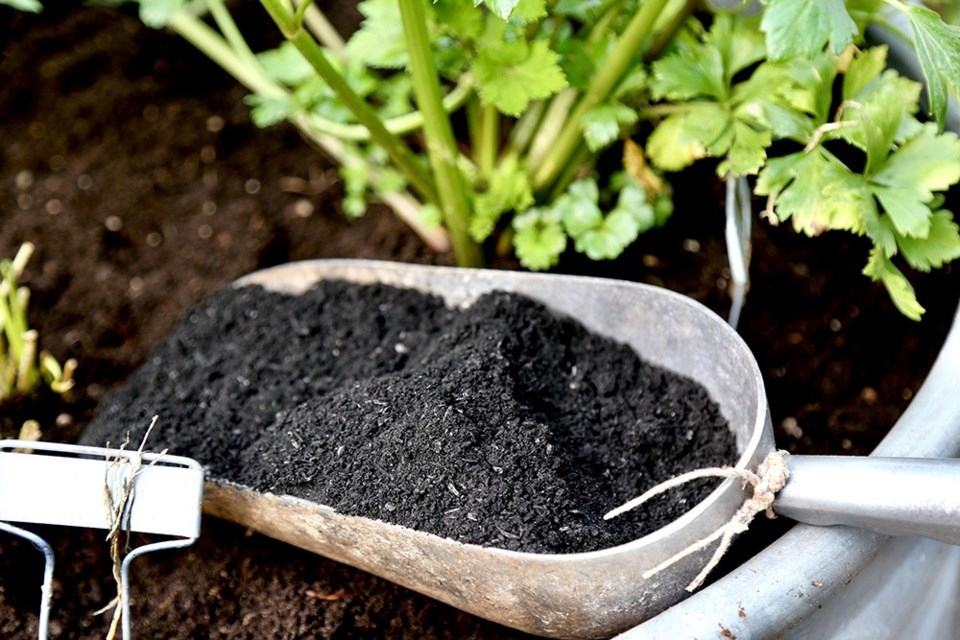I would have been happy with a lump of coal in my Christmas stocking this year. More specifically, some biochar crushed into tiny ice and snow-like flakes and shards.
As children, my friends and I would work all year to avoid having a sedimentary lump of carbonized plant matter left in our slippers, or dropped into socks hung with care. Coal was equated with "naughty," and to many it still is.
Coal was created over the course of millions of years, as dead biomass (plant matter) decayed into peat and was then converted by heat and pressure into combustible rock.
Mining and burning coal en-masse as humans have done since the Industrial Revolution, resulted in what climate scientists report is the single largest anthropogenic (human caused) source of atmospheric CO2 contributing to climate change.
There is no undoing damage done, but knowing what we do about carbon and where surplus belongs — underground, not in the atmosphere — can help us sequester carbon in biochar in a way that benefits not only the planet generally, but our food gardens specifically.
Biochar is a form of charcoal that is made either incidentally or intentionally when biomass is "burned" in a low-oxygen environment. This can happen naturally in a smouldering, earth-covered fire pit, as practised by pre-Columbian Amazonians, and it can happen through a complex process known as extreme pyrolysis (carbonization).
During my former life as a corporate communicator, I touted mobile and small-scale pyrolysis as a green and productive closed-loop system of bio waste management and energy production for small communities. In hindsight, we were surfing flat water a dozen or so years ahead of the climate change-awareness curl.
Permaculturists make biochar in small homemade biochar ovens or in pits. Farm and garden remnants like wood waste, trimmings, husks, leaves, needles, cobs, straw, etc are burned without oxygen, so that the non-carbon cellulose, lignin and fibres gasify, leaving black spun glass-like skeletons of pure and stable carbon.
Examined under an electron microscope, these sponge-like skeletons look like miniature bug hotels. When the biochar is broken down into small pieces and used as a soil amendment, gardens benefit from its water absorbing and retention qualities. Microbes move into the millions and millions of tiny habitats where they can more easily and beneficially work their collaborative magic alongside mycelium and other organic garden partiers.
Research suggests that biochar attracts beneficial elements that plants need to thrive, preventing nutrients from leaching out of the rhizosphere (root zone) where they would no longer be available to plants.
Biochar in composts keeps odours down, balances moisture, reduces off-gassing, and improves soil biology. Biochar in seed starting mixtures helps retain moisture and prevents nutrient leaching. Adding biochar incrementally to all levels of organic home gardens can, over time, help build healthy, balanced, self-regulating edible ecosystems, and sequester carbon in the soil.
Perhaps someday, when public will and environmental legislation reach equanimity and pyrolysis is more widely accepted, biochar input bins will sit out at our curbs for collection. Until then we do what we can individually and collectively, to sequester carbon.
I have been adding biochar, in small doses to my raised beds and composts, for two years. Homemade — admittedly imperfectly — so there is some quantity of ash that comes along for the ride. Wood ash is not biochar and it is important to recognize the difference.
Wood ash has been used as a natural fertilizer for centuries, and can be a wonderful source of nutrients and trace elements. Wood ash nutrients vary by wood type, and if used directly without pre-composting, can burn plants and adversely alter soil PH. Doing a bit of research and soil PH testing before adding wood ash is advisable.
Biochar is an idea whose time has come. We are hearing and reading more about biochar in conversations related to the natural wisdom of lightning fires, in conversations about organic gardening, and now here in Garden to Table musings about urban permaculture.
I gifted biochar by the jar this Christmas, to gardening friends naughty and nice. In the new year, I hope to share our collective observations related to its use indoors and outdoors, in gardens of all sizes.
Until then, stay safe and warm.
Laura Marie Neubert is a West Vancouver-based urban permaculture designer. Follow her on Instagram @upfrontandbeautiful, learn more about permaculture by visiting her Upfront & Beautiful website or email your questions to her here.
For a taste of permaculture, click on the YouTube link below:
(Video - Courtesy of West Vancouver Memorial Library)



